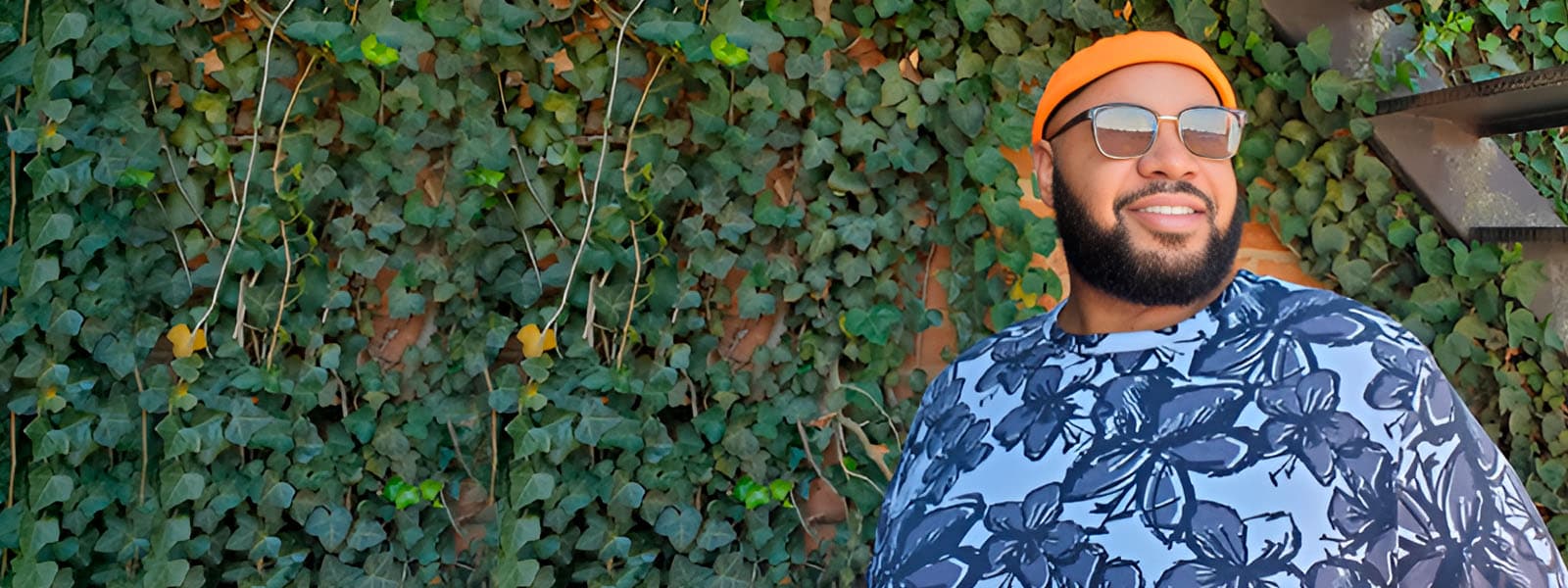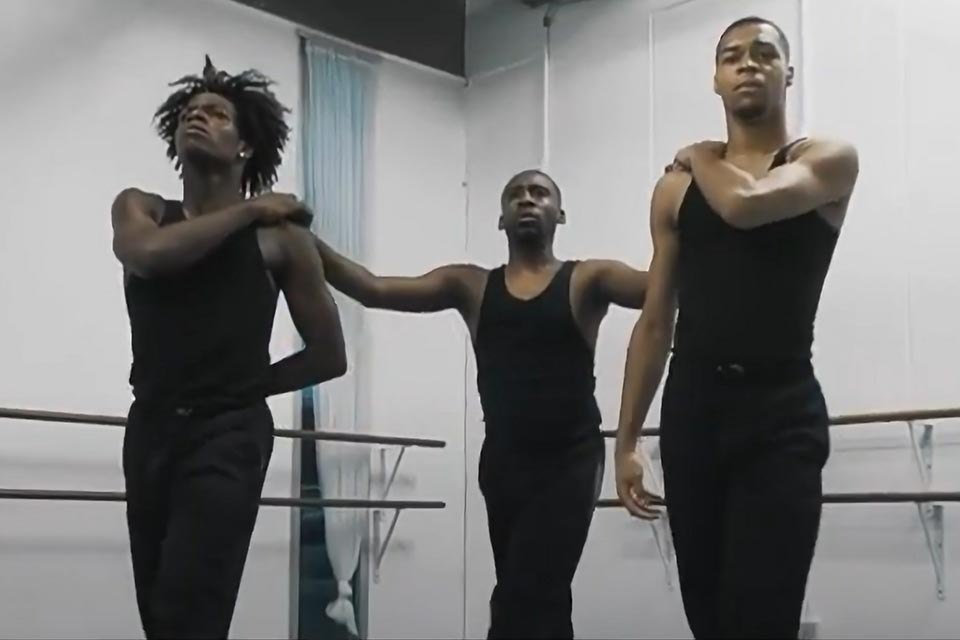Choreographing change: how Rob A. Myers has worked towards a more inclusive dance community
Rob A. Myers is a modern-day Renaissance man. At UNCSA, he is the Interim Director of Recruitment and the Admissions, building on over a decade of experience in enrollment management and higher education. He hosts his own cooking show and has published a cookbook. And then there’s his lifelong passion: dance.
Myers became a dancer at a young age, published his master's thesis on the dance community, and has been a dance teacher and choreographer for over 20 years. He has pushed for inclusivity and representation every step of the way. This summer, Myers is continuing to grow his dance career as a Dance Project Artist in Residence, an initiative that nurtures North Carolina choreographers and supports the development of high-quality dance work.
An early love of dance
Myers has known since age nine that dance was a critical part of his life, influenced by music videos by artists like Janet Jackson, Paula Abdul and Michael Jackson. But he was not a traditional studio kid; he was a self-taught dancer until high school, unsure of how he fit into a classical dance space where black and brown men were rarely represented. It wasn’t until Myers saw the Alvin Ailey American Dance Theatre perform that his perception began to change. “Not only did the company have black male dancers, but the stories they were telling felt personal and more relatable,” he recalls.
In high school, Myers developed his love for the art form through dance classes, learning basic vocabulary, techniques, genres and choreography. As an extreme introvert, dance allowed him to express his feelings without speaking. “It piqued my competitive nature, but also gave me physical activity, and allowed me to be in spaces and places I otherwise wouldn’t have been in.”
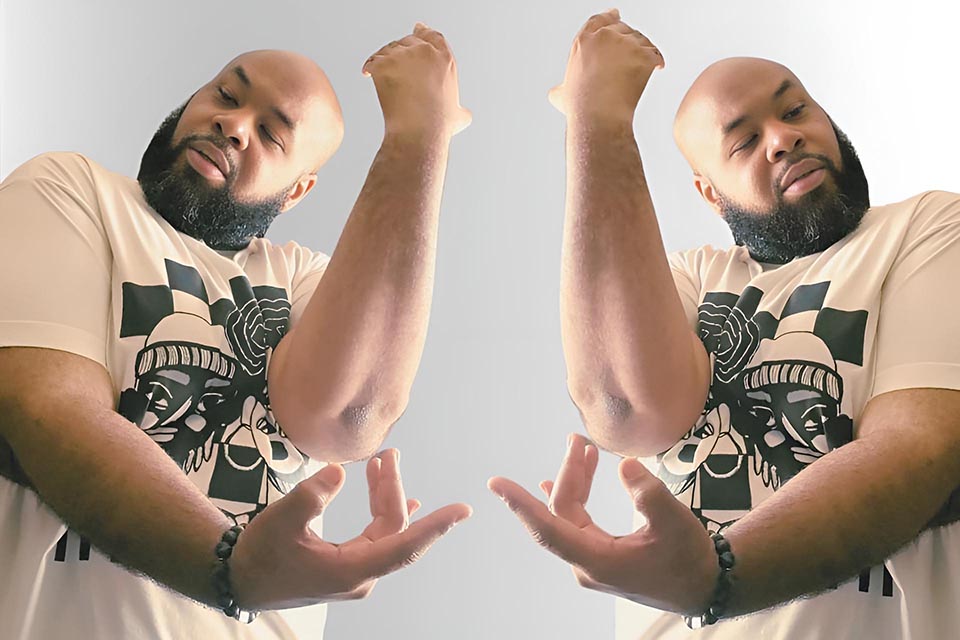
Dance allows Rob Myers to express his feelings without speaking. /Photo: Rob Myers
Meanwhile, Myers learned to drown out the taunts from his schoolmates – one of the biggest obstacles to him pursuing dancing. “Boys my age were trying to do all they could to fit in, to avoid ridicule from their peers and families,” he says. “They never really understood or shared my interest in dance.” Overcoming the social pressure to fit in, Myers continued pursuing dance in college, where he earned a B.A. in Communications from the University of South Florida and an M.A. in Community Leadership with an emphasis in Arts and Culture from Westminster College.
“No Boys Allowed”
Motivated by his personal experiences, Myers devoted his graduate research to sharing the stories of those who felt othered and unseen in the dance community, primarily men and male-bodied dancers. He recognized not only a lack of on-stage and on-screen representation, but of books and articles which vocalized his frustrations or discussed elitism within classical dance.
Myers’ research culminated in the publication of his thesis, “No Boys Allowed,” which examines the factors that deter young men from pursuing traditional dance training. In the process, he provided space and time for individuals to unpack their experiences with dancing. “We were able to trace back to the root of where opposition first presented itself, how it could have been avoided and how future decisions and modified common practices can affect change and promote healing,” he says. “People who’ve read my research are more aware of their roles in making dance more equitable for more people.”
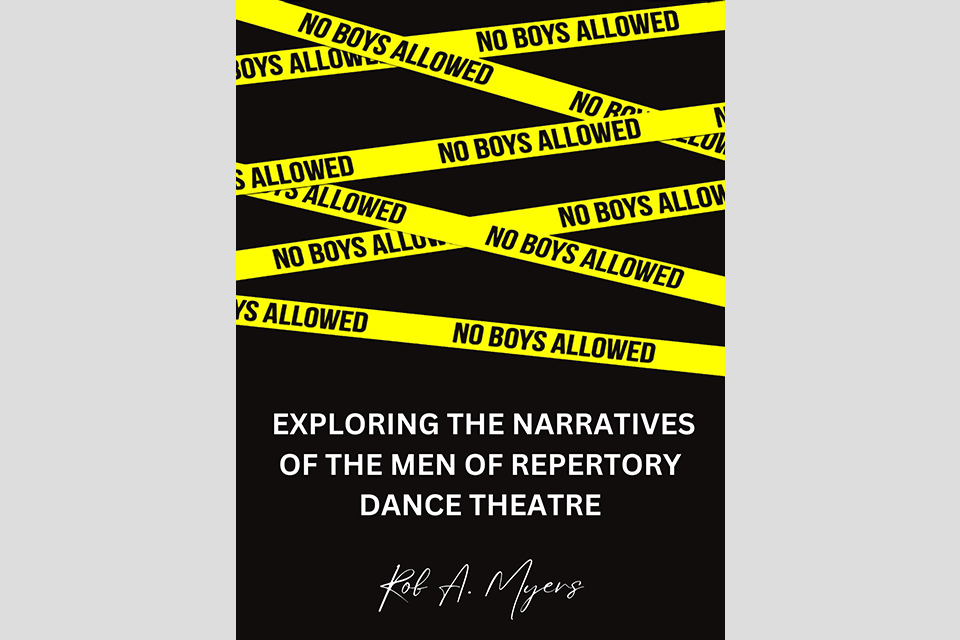
"No Boys Allowed: Exploring the Narratives of the Men of Repertory Dance Theatre" by Rob A. Myers
Building on his graduate thesis findings, Myers’ current project, “The Pouring,” explores the idea that though the expectations placed on young men are heavily scrutinized, the motivators are rarely examined. “Life is a steady stream of concepts and constructs that shape how we conduct ourselves, how we perform. We can all stand to be more careful and intentional about what we pour into others,” he says.
From Super Bowl to dance studios
“The Pouring” is only the latest of Myers’ projects, joining an impressive list that includes work for the Super Bowl XXXIII, Stage Ready Productions, Georgia Tech, Spelman College and the Miss Black Georgia Organization, along with competitive dance studio work in jazz, lyrical, contemporary, hip-hop, African and musical theater. While every project has helped him grow as an artist, Myers’ favorite was the African American Dance Review (AADR), a cultural dance experience illustrating the story of African American dance from the 1600s to today. He worked with choreographers and dancers he loved and respected, learned about himself and his heritage, and celebrated lesser-known black artists who had major impacts on the dance industry and American history.
Now, starting in June 2023, Myers will spend a year as an Artist in Residence with Dance Project and NC Dance Festival. The program provides space, peer support and professional development to an annual cohort of choreographers. For Myers, this means an opportunity to slow down: “I most often compose works in a more fast-paced environment, where the creative process is often overshadowed by the end-product,” he says. “This residency will allow me to take my time and work through some past traumas and idiosyncrasies that have shaped my dance journey – good, bad, and indifferent.” Instead of a perfected final piece, Myers is excited to offer something more authentic and introspective.
The heart and spirit of an artist
This extensive experience in the arts gives Myers an advantage in his work at UNCSA. His expertise and insight enable him to advocate for prospective dancers who might have otherwise been overlooked. At the same time, his dance community connections allow him to recruit from a broader array of schools and studios. He’s able to be both helpful and realistic with prospective families, offering advice and having hard talks. And, of course, he’s able to exist in the inspiring epicenter of young artists. “I love being able to get to work around students who seek to change the world with their crafts,” Myers says. “The heart and spirit of an artist is incomparable.”
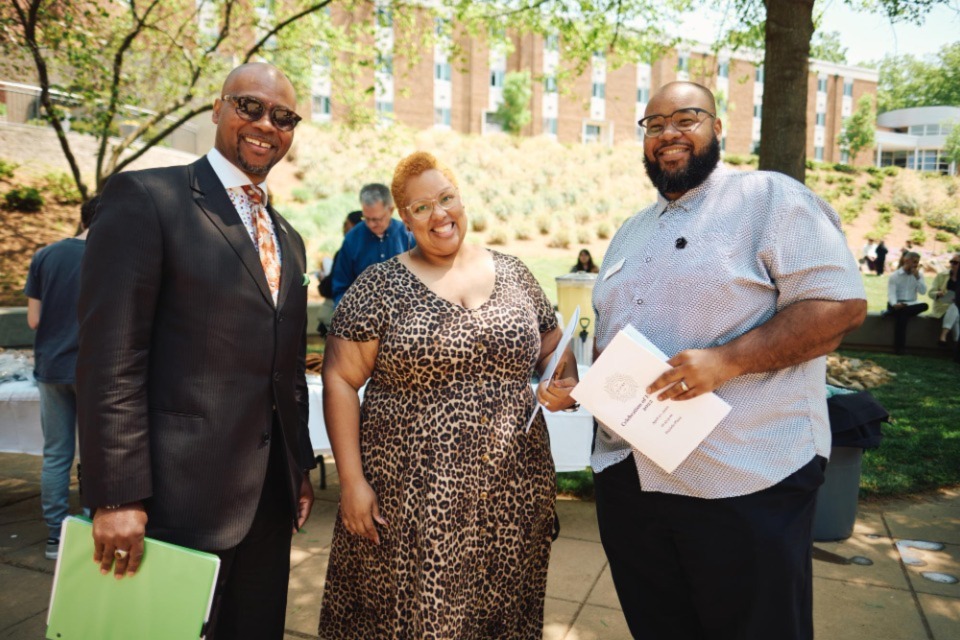
Rob and Tasha Myers with Executive Vice Chancellor and Provost Patrick J. Sims at the 2022 UNCSA Celebration of Excellence / Photo: Wayne Reich
Today, Myers believes dance is more accessible for young men. “There is much more tolerance for boys who dance now,” he says. “The sheer visibility and avenues for young men to explore dance are greater, and the success stories of young male dancers are inspiring.” There is still work to be done, however – he says toxic masculinity and heteronormative behavior persist, and sports like football and basketball are still the status quo for young men. But that’s where Myers comes in: project by project, he is working to ensure dancers of all sizes, colors and genders have the platform to dance freely.
Get the best news, performance and alumni stories from UNCSA.
SUBSCRIBE TO OUR NEWSLETTERS(OPENS IN NEW TAB)(OPENS IN NEW TAB)(OPENS IN NEW TAB)(OPENS IN NEW TAB)(OPENS IN NEW TAB)
June 27, 2023






